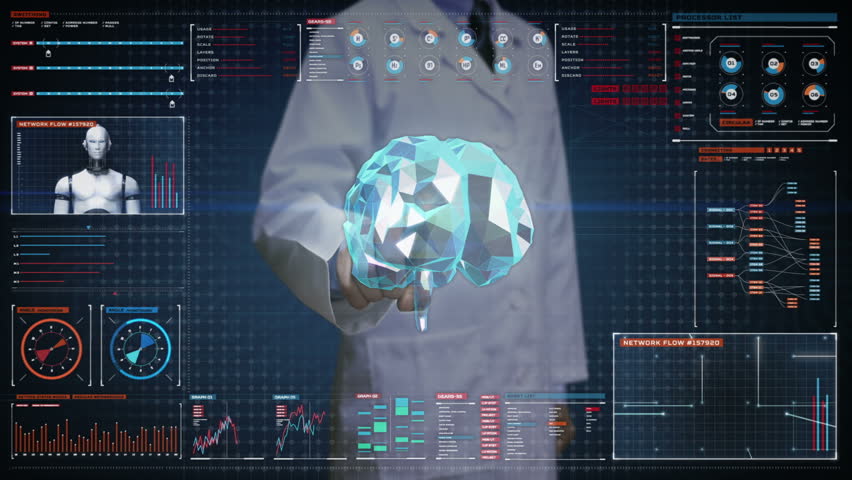Bitbrain was founded in 2010 as a spin-off company of a research team from the University of Zaragoza in Spain, pioneer in approaching brain-computer interface applications outside laboratory investigation settings.
In this interview with Javier Minguez, cofounder of bitbrain we tried to get his opinion on how NeuroTechnology can be implemented and how it is built to support User Experience.
- Can you give a quick background about you and how you got to this technology?
I am Javier Mínguez, associate professor and head of the neurotecnology research team of the University of Zaragoza, Spain. I am also co-founder of Bitbrain, a spin-off company of the University. Altogether, we have been active in this fascinating field for almost 15 years now. Our main objective is to bring neurotecnology and brain-computer interfaces close to society, democratizing its use through a combination of cutting-edge wearable technology and innovative solutions that use brain information. - In your opinion what is the field of Brain Computer Interfaces about?
Brain-computer interfaces is about developing technologies that sense brain activity and extract information usefull information for applications such as rehabilitation, gaming or communication among many others. The possibilities are infinite. - What are some challenges you face with the emerging technology?
Keeping in mind that in the large majority of applications reliability is a must, then we face two important challenges to fulfil the expectations. The first one is to put the brain-sensing devices in the hands of consumers with a degree of maturity that solutions build upon them are effective and reliable. On the one hand, we need to design good couplings between sensor materials and electronics to get acceptable signal-to-noise ratios, while remaining as less invasive as possible. On the other, we need to go beyond typical devices with few sensors and reach a compromise among functionality, ergonomy and usability. At a functional level, I believe that for each application there is an this optimal number of sensors that can be placed on the right positions, to give you those specific brain signals you are looking for with the quality you need. There is now a trend towards Minimal EEG tecnnologies.
The second challenge is that reliable brain decoders are in need. Brain-computer interfaces have now been using machine learning methods for a long period of time to deal with the large inter- intra- subject variability of the EEG, one of the main issues with this technology. Obviously, both challenges go hand in hand. Having good brain decoders depends strongly on the brain-sensing technology: it is difficult to extract information if the measured brain waves are just noise, or are not in the right positions for your purposes. How far are we from getting this technology into the hands of the users?
Very close. Reliable technologies are already present in the B2B sector. Bitbrain, for example, has developed technologies for applied neuroscience research, and based on them, it has built some business verticals for consumer neuroscience or neuromarketing, and cognitive enhancement in the health and wellness sector. Furthermore, we have an increasing number of neurotech developers looking for easy to use tools and programming frameworks to bring their ideas alive. All of these neurotechnologies are now commercialized worldwide.
In my opinion companies still need some time to find its way into the B2C space with solvency. As I mentioned before, brain-sensing devices are not there yet, and neurotech companies are still searching for that good compromise between cost and reliability. However, new creative and dynamic companies are emerging, that with the digital revolution with its wearable explosion, will allow us to see them in the B2C arena very soon. Like many other, Bitbrain is also walking in this direction.What problem will this product solve? What features and benefits will your product
bring to the consumers?
We have been working to develop B2B reliable solutions for scientific research, health, consumer neuroscience and developers. The key point is that all the solutions have been designed to solve specific problems in these areas, adapting 100% the solution to the specific need of the clients. For example, if your goal is to carry out a neuromarketing study you do not have to perform it with a neuroscience research platform, that you probably do not know how to use correctly because you are not a researcher in neuroscience. You can use our neuromarketing platform with: 1) pre-designed studies for market research so that you do not have to worry about designing a rigorous experimental protocol by yourself; 2) with a virtual assistant that informs you if the technology is correctly placed; and 3) a software for brain data decoding in the cloud so you do not have to face the large difficulty of decoding and interpreting brain data by yourself. Our goal as a company is to make neurotechnology accessible, and the main requirement is that technology adapts to the needs of the client and not vice versa.Where do you see the product in few years from now?
For now all the technologies are B2B, as they require a reliability that is only possible to achieve with expensive, high quality brain-sensing devices. However, we foresee these technologies in the B2C arena very soon.Is the market large enough? Are there competitors?
There is a lot of effort spent nowadays devoted to the evangelization of neurotecnology in the B2B space. I think this will shift to B2C relatively soon favoured by the adoption of wearable technologies. We have competitors in all the business areas of Bitbrain, which is a good indicator that the market is growing.Would the product influence or be influenced by others markets and why?
Too many products in too many markets. I think that is better to talk about how other technologies could influence neurotechnology…
Neurotechnology is a multidisciplinary effort, and is and will continue to be greatly influenced by advances in several areas such as artificial intelligence (which will allow better data decoding and interpretation), new materials (which will allow better sensors), or the Internet of things (which will allow to incorporate the context to enrich the neurotechnology applications). Last but not least, neuroscience is still unveiling the secrets of how the brain works.Will you give us a closing remark and areas of improvements?
When I talk about the work that Bitbrain is doing in neurotechnology, and about all the incredible projects that we are carrying out, most people still look at me as if it all was science fiction. But the truth is that we are entering the fourth industrial revolution, a revolution that will change the way we work, live and relate among us. The speed in which these changes are going to take place has nothing to do with previous industrial revolutions, and we must be prepared. We will see incredible advances in neurotechnology but also in artificial intelligence, robotics, internet of things, 3D printing, nanotechnology, quantum computing... We have to start opening our minds to the changes that come, try to recycle as much as possible and bet on our creative and emotional intelligence.What are you reading right now?
The Strange Order of Things by neuroscientist Antonio Damasio, where he deepens in the importance of human feelings.



